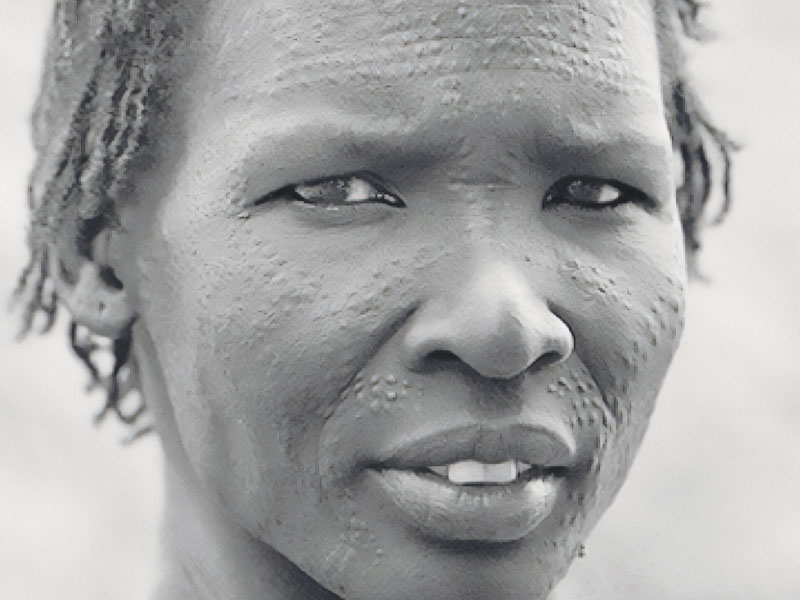African Tribal Tattoos
Issue 13

Husain Abbasi (Tunisia)
Over time, primitive man in Africa has transformed several norms, rules and models of collective behaviour into personal and communal social imperatives. The individual has been forced to comply with norms and customs passed down through the generations, so that which was once individual behaviour has become an established tribal imperative.

Tattooing, a form of scarification, is one example of a personal practice that has become a social norm among Central African tribes; tribal members must undergo tattooing or cease to belong to their community.
To an outsider, Central African tattooing is terrifying and painful, yet for African tribespeople it is intrinsic to their culture and religion, the arduousness of their lives having prepared them for pain.
The following questions are posed:
Are African scarifications and skin markings types of tattoos?
If we believe that they are decorative, how do we assess their aesthetic value?
How does this painful process evolve into euphoria and pleasure?
To what extent is tattooing magical or religious?
Can African tattoos be considered a means of communication?
Tattoos vary by place and culture although tattooing is a worldwide practice. Tattoos have a symbolic value specific to their community.
In the past, tattoos were ancient religious symbols used to repel the devil and to remove black magic.
In Central Africa, tattoos are signifiers of tribal membership. Unlike traditional Arab tattoos or contemporary Western tattoos, Central African tattoos involve scarification, knives or other sharp implements are used to inscribe signs and symbols on the body.
Tattooing is an ancient human practice. Ancient Egyptian mummies have been discovered with tattoos, which the Ancient Egyptians used to deflect envy. Other cultures have used tattoos as tributes or as acts of sacrifice to a deity. Fossilised corpses dating back to the Neolithic era bear evidence of tattooing, and tattoos have long been used as talismans against evil spirits and as permanent amulets to provide medical and magical protection. Tattooing has also been used to signify tribal membership.

Tattooing involves the use of sharp implements and coloured chemicals which are rubbed into deep layers of the skin so as to inscribe permanent signs and symbols.
African tribespeople acquired their knowledge from nature and teachings were passed down from generation to generation. The tribal leader knows all the tribe’s secrets; he is a very knowledgeable historian. His skin bears tattoos, drawings, scratches and symbols that record the tribe’s story.
African tattoos are not frivolous; the practice dates back to a time when nomadic tribe members revered animals and feared natural phenomena such as thunder, wind and rain.







































































